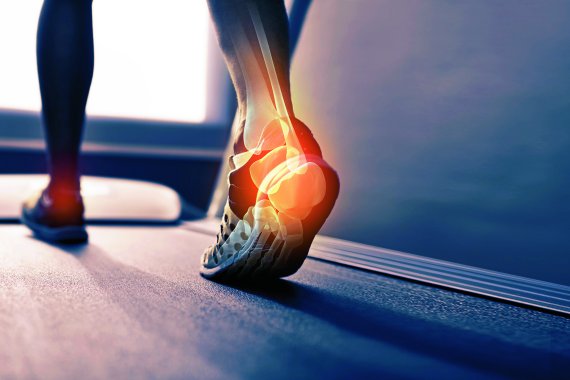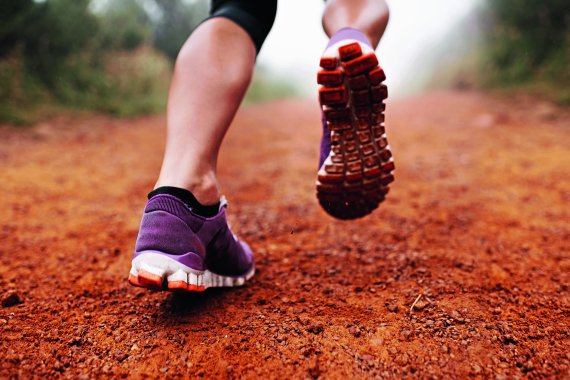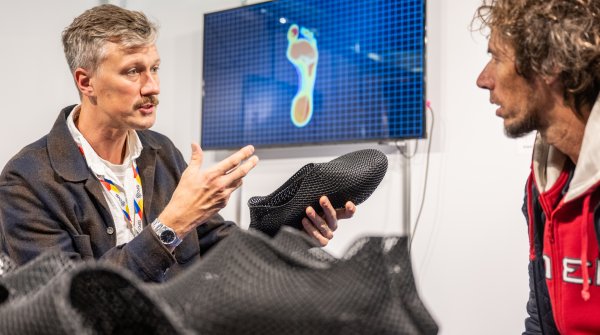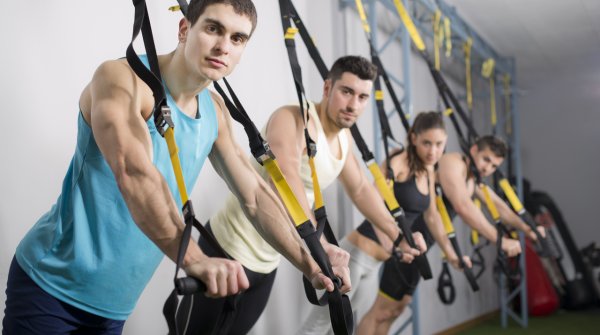
If a sudden pain occurs in the back of the heel or in the heel in general when jogging, alarm bells should ring. If you ignore or underestimate it, it can sometimes lead to a longer break from training, which you could have avoided by taking the right precautions. We are talking about plantar fasciitis - a disease of the heel that occurs mainly in amateur runners, but also in professional athletes.
The tricky thing is that the pain in the back of the heel goes away after a while when it first occurs, but it returns during the next training session and gets progressively worse - especially if sprints are included in the run. As the condition progresses, the pain is no longer limited to the sports phases, but also occurs after getting up and later even at rest. There are a few tips and tricks to follow to prevent this common condition.
Plantar fasciitis is an inflammation of the plantar fascia - also known as the plantar tendon. You can think of it as a tendon plate that connects the metatarsal bone and the heel bone. It is an important part of the foot, especially for runners. It gives the foot stability under pressure from contact with the ground by cushioning the momentum during the stance phase of the footstrike. It maintains the longitudinal arch of the foot and prevents the arch from dropping and thus the development of a flat foot.
If the pressure on the plantar fascia is reduced during contact with the ground becomes too high, the tendon plate can overstretch and become inflamed. The severity of the condition varies from patient to patient: anything from a strain to tears to a rupture of the plantar fascia is conceivable. Therefore, action should be taken in every case and the healing process tailored to your own body should be initiated - with the help of a specialist doctor, of course!

Plantar fasciitis is usually caused by too much training, which is mainly carried out on hard, asphalt surfaces. Sudden increases in running intensity are particularly dangerous. Therefore, the workload should be continuously increased for the benefit of the feet.
However, being overweight, running with worn, unsuitable shoes or malpositioned feet, especially flat feet, can also (co-)cause the disease. In addition to the typical stabbing pain in the back of the heel, increased sensitivity to pressure in the sole also indicates a problem with the plantar tendon.
It is not uncommon for plantar fasciitis to be accompanied by the formation of a heel spur - a thorn-like bony outgrowth on the heel bone. This naturally leads to pain in the back of the heel. However, this does not mean that all people with heel spurs also suffer from plantar fasciitis. Many heel spurs do not cause any pain at all. Accordingly, treatment varies from patient to patient. The following measures are often used for treatment:
- Shock wave therapy
- Use of insoles
- physiotherapy
- self-massage
- cooling therapies
- injections
- Foot tapes
- Surgery
In addition to all these options, a break from running should also be taken in any case, as otherwise the healing process will be delayed or even stagnate.
Just as the treatment options vary, so does the duration of the healing process, which can take anywhere from six weeks to a year. In general, it is important to consult a doctor if pain in the foot persists, also to rule out other injuries such as a fatigue fracture, which can also be associated with too much training.
Why prevention is important
Physiotherapist Laura Molitor recommends preventing the condition in the first place to avoid being banned from running. "It's particularly important for runners to strengthen the muscles in their feet and to stretch and massage the foot - as additional training, so to speak," she says. And even if in most cases only one foot is affected by the condition, both feet should be addressed as part of the preventative measures.
Integrate foot care into everyday life
Fixed times at which you take care of your "foot fitness" can help to incorporate prevention into your everyday life. The exercise of rolling your feet over a hedgehog ball is just as simple as it is effective - circling your feet is also a good workout. "And stretching the feet is important. This means, for example, pulling your toes forward. You can also do this well by standing directly in front of a wall. While the rest of the foot remains on the floor, the toes press against the wall," explains the physiotherapist.
Self-massage for relief
It is not only extremely important, but also soothing and pleasant to massage yourself and rub out the muscles. You can start with both hands, starting at the toes and working your way to the end of the foot. But it's not just foot treatment that prevents unpleasant heel injuries - additional calf training is also helpful.
Calf strengthening as a supplement
To do this, you can stand on a step with your toes and the ball of your foot. Then lower your heels and use the strength of your calves to push yourself up until you are standing on your toes. This can also be done in a somewhat simplified way without a step by standing on the tips of your toes.
- ISPO awards
- Mountain sports
- Bike
- Design
- Retail
- Fitness
- Health
- ISPO Job Market
- ISPO Munich
- ISPO Shanghai
- Running
- Brands
- Sustainability
- Olympia
- OutDoor
- Promotion
- Sports Business
- ISPO Textrends
- Triathlon
- Water sports
- Winter sports
- eSports
- SportsTech
- OutDoor by ISPO
- Heroes
- Transformation
- Sport Fashion
- Urban Culture
- Challenges of a CEO
- Trade fairs
- Sports
- Find the Balance
- Product reviews
- Newsletter Exclusive Area
- Magazine







